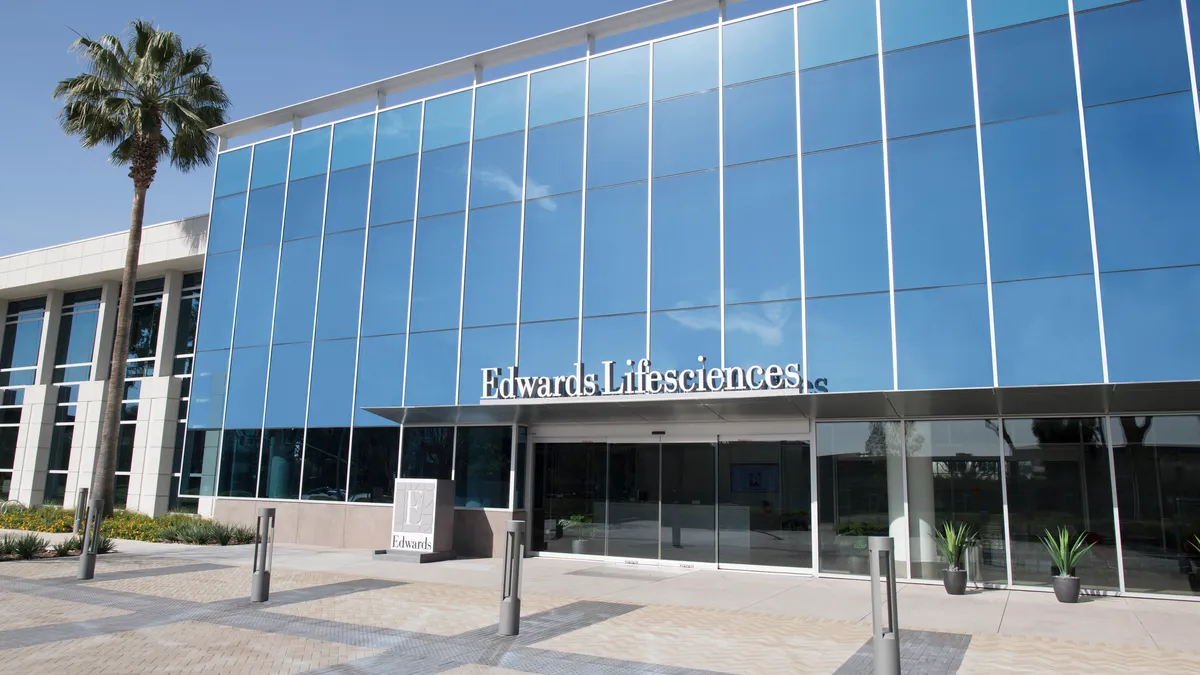Dive Brief:
-
Use of Edwards Lifesciences' transcatheter aortic valve replacement devices increased by around 90% in April, according to hospital data reviewed by analysts at Jefferies.
-
April 2020 was the low point in the pandemic for TAVR sales, meaning that growth is off a low base, but the estimate is still well above the sub-50% second quarter rise predicted by analysts.
-
The Jefferies analysis suggests Edwards could comfortably beat the current analyst forecast but comes with multiple caveats such as the lack of data from many of the sampled centers.
Dive Insight:
Edwards exited the first quarter increasingly confident that it could hit the 15% to 20% TAVR growth target it set in December, despite the winter surge in COVID-19 cases causing a slow start to the year.
"Things were tough in January and February, and clearly got better in March. When you got toward the back end of March and you had spring break, you felt that effect as well, but clearly an upward trend,” Edwards CEO Mike Mussallem told investors on a quarterly results conference call last month.
Analysts at Jefferies interpreted Mussallem's comment as indicating a sharp recovery that extended into April. Now, the analysts have had a first attempt at quantifying just how sharp a recovery the TAVR market experienced last month. The analysis is based on data Jefferies collected from hospitals that perform TAVR procedures in the U.S.
According to the model, TAVR volumes fell 15% to 19% over the first two months of the year, before growing 23% to 32% in March. The trend, which is in line with Mussallem's comment, likely reflects both the return of elective procedures as the crisis in the U.S. eased up and the easier comparison to March 2020, the second half of which was severely disrupted by the pandemic.
As all of April 2020 was disrupted by the pandemic, it is highly plausible that growth will exceed the 23% to 32% seen in March. Whether growth can hit the 85% to 95% predicted by the Jefferies model remains to be seen.
The analysts cautioned against using the April modeling data as the full second quarter trend, noting that a reporting lag means it only has data from a subset of hospitals, but also pointed to reasons to take the growth prediction seriously. Specifically, the analysts said the model has been "directionally accurate" in six of the past eight quarters and recent channel checks suggest "a return to pre-COVID levels more broadly across elective surgeries."
The April data looked at 124 TAVR sites.
Medtronic could provide more concrete details of how the TAVR market fared in April on its fourth-quarter results conference call later Thursday. The company, which competes with Edwards for the U.S. TAVR market, has a different financial year than other companies and as such is now reporting results for February, March and April.











